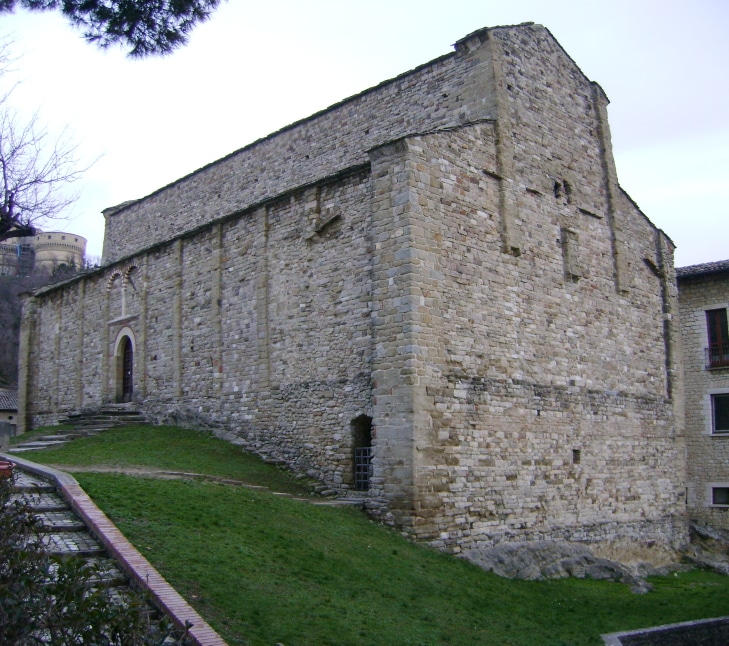The parish church of Santa Maria Assunta in San Leo is the oldest building of worship in the city and Montefeltro, representing the first material evidence of the Christianisation of the area, carried out by Saint Leo between the 3rd and 4th centuries. According to tradition, it was the Dalmatian saint who, working as a stonecutter, built the first church, dedicated to the Assumption of Mary, the Dormitio Virginis. Thanks to its location, on a rocky protuberance, there are two rooms under the naves: the crypt and the so-called Sacellum of St Leo. The latter, accessed through an external door, preserves traces of an apse carved into the rock. It also preserves the front of a sarcophagus, decorated with the depiction of two peacocks watering at the cantharus, which represents the oldest sculptural evidence of the complex, probably dating from before the 8th century, used in the splay of a single-light window.
The parish church has a basilica layout with three naves. The walls, made of sandstone, limestone and other types of stone, are punctuated by pilasters resting on wide plinth bases. The three apses are adorned with hanging arches, made of alternating ashlars and bricks arranged three by three between the pilasters. The largest apse, considerably wider than the other two, encompasses the latter for about a third of their perimeter, similar to the nearby cathedral. The arching of the sides and the façade, which overhangs the rock below and is enlivened by five buttresses, the middle of which is interrupted by the mullioned window in the centre, has not survived. The portals are then placed on the sides, both with round arches and both surmounted by a blind loggia, in the lintels of which alternate two-coloured ashlars.
The interior, with a longitudinal plan, has three naves separated by round arches supported by alternating pillars and columns. The columns, six in total, are Roman or late antique elements that belonged to other buildings reused in the pieve, as are the four Corinthian capitals above them, dating from the 1st-4th centuries. Over the crypt rises the presbytery, which houses a ciborium in the central apse, dated 882.



